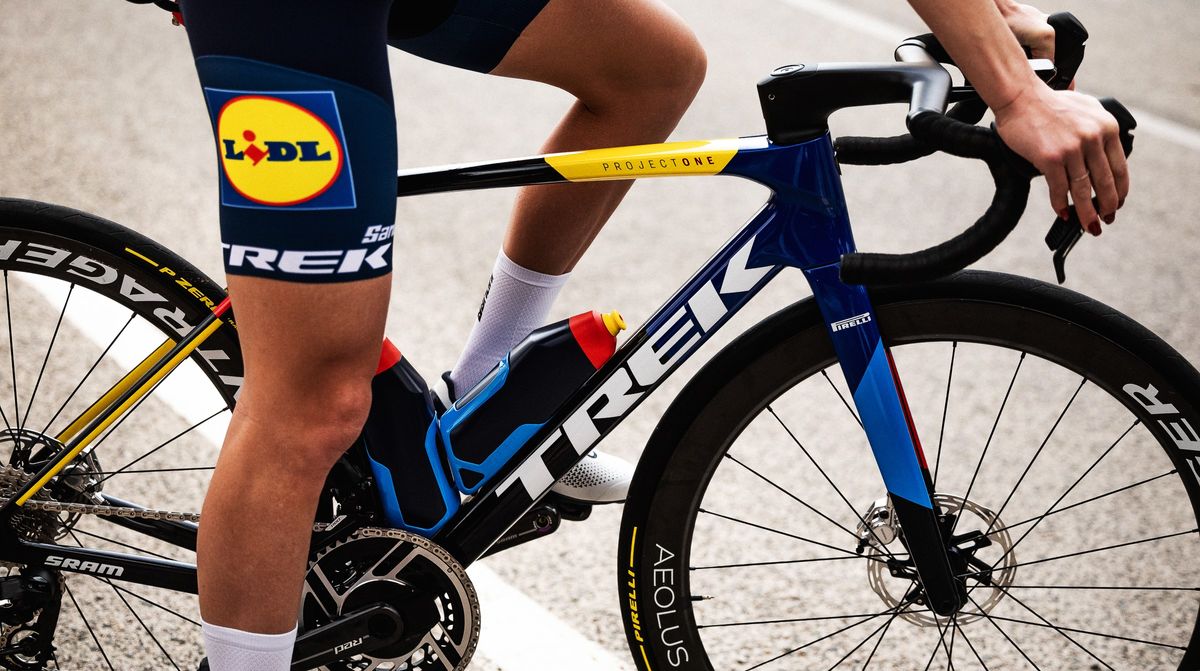Trek has officially launched its brand new version of the Madone. This will be the 8th generation of the bicycle. Trek claims it is as aero as the Gen 7 Madone, but now as light as the Emonda. The new Madone will replace both bikes, so Trek joins the growing number of bike brands that are ditching separate aero and lightweight offerings.
Since the new bike spotted first among the pros at the start of 2024, its sleeker appearance compared to the Gen 7 Madone sparked intense speculation as to whether it was a new Madone or a replacement for the Emonda.
While the Gen 7 Madone was only launched two years ago, the lightweight Emonda is now four years old, so the bets were on a new Emonda.
Basically, the new Gen 8 Madone replaces both the Gen 7 Madone and the Emonda in one lightweight aero package. Trek says the new Madone weighs 320 grams versus the Gen 7 Madone frameset, which in turn was already 300 grams lighter than its own Gen 6 predecessor.
It claims a weight of 796 grams for a painted ML Madone SLR frame and 350 grams for the fork, without added hardware like the new UDH rear derailleur hanger. That brings the claimed full bike weight of a top-spec Madone SLR 9 AXS bike to exactly 7kg.
The lightweight makeover means the Gen 8 Madone is now just as light as the Emonda. At the same time, Trek says the frameset is aero-optimized where it matters most, but the Gen 7 bike’s tube profiles have been thinned out where the aero gain is less so it can shed the weight.
We went to Spain for the launch of the new Madone and you can read our first drive review here.
The latest racing content, interviews, features, reviews and expert buying guides, straight to your inbox!
The aero tube profiles have also been upgraded. Trek says the new Full System Foil shapes have gone beyond Kammtail, offering better aerodynamics over a wider range of yaw angles thanks to a more rounded trailing edge instead of the sharper, squared-off edges of a Kammtail profile.
Wind tunnel testing showed that the old Gen 7 Madone was faster than the Emonda on climbs of up to 3 percent, when weight trumped aerodynamics as the dominant factor. The new Gen 8 frame is said to be faster than the Emonda on climbs of up to 12 percent, the steepest gradient tested.
Just as aerodynamic as the Gen 7 Madone
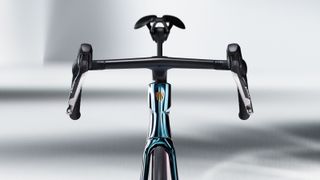
Trek says the new bike is just as fast as the Gen 7 Madone, and 77 seconds faster per hour at 200 watts compared to the Emonda. The design optimizes airflow for the bike-plus rider, while the riding position remains the same as the Gen 7 bike.
Madone SLR models will also feature an updated Aero RSL integrated handlebar and stem. These handlebars have hoods that are 3cm narrower than the drops to help riders stay aerodynamic. It’s thicker in cross-section at the tops than the Gen 7 bike’s handlebars and more comfortable to hold, though it’s still compatible with the old bike’s RCS headset design.
The new design raises the top of the stem by 4mm, but Trek offers an aftermarket RCS Race Low lower top cover if you want to return to the Gen 7’s 4mm-lower top bar height. There’s also a new Blendr accessory mount that’s lighter and easier to remove.
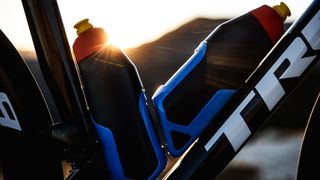
There are also new aero-profiled 595ml water bottles and cages, although you can also fit round bottles in the cages.
Trek says the RSL Aero bottles and cages save 3.7 watts at 28 mph over standard round bottles and make the bike faster than riding without bottles. They can also be purchased aftermarket if your bike needs an aero upgrade.
It’s a similar approach to Cannondale’s latest SuperSix Evo, with that brand claiming its bottles improve the SuperSix Evo’s aerodynamics.
Lower weight, more comfort
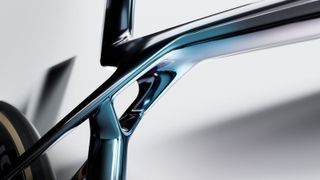
The top-of-the-line SLR-quality Madone is made with Trek’s latest 900 OCLV carbon, which it claims is up to 20 percent stronger than the 800 OCLV carbon used in the Gen 7 Madone. A new casting process and one-piece fork also allow Trek to save additional weight.
When Trek launched the Gen 7 Madone, much of the weight savings on that model came from replacing the Gen 6 bike’s adjustable IsoSpeed seatpost with a lighter, non-adjustable IsoFlow system.
Trek said at the time that it made the Gen 7 seatmast as stiff as the Gen 6 bike in its stiffest setting.
However, with the new Gen 8 Madone, vertical compliance has been increased, which is now up to 80 percent greater than on the Gen 7 bike and 24 percent greater than the Emonda. The new design is also lighter than the Gen 7 Isoflow.
Trek has adjusted the tube shapes across the size range so that frame stiffness is more comparable between sizes. A byproduct is that XS and S size frames are now lighter, while the frame aesthetics are now more proportionate across the size range.
The new Madone can accommodate 32mm tires, the same as the Gen 7 model.
New dimensions
With the new Gen 8, Madone Trek has rationalized the size range, with the new bike now offered in six sizes from XS to XL, as opposed to the eight sizes of Gen 7. Despite fewer sizes being offered, Trek says there will be fewer There is overlap between frame sizes, so the Gen 8 Madone actually fits a wider range of rider heights.
The new size M replaces the old sizes 52 and 54, while the new size XL replaces the 62, but has a longer seat mast. As with the Gen 7 bike, the seatpost wedge can be reversed to increase the range of saddle height adjustment.
The geometry of the entire range is similar to the Gen 7 Madone, although the frame stack is slightly higher. Instead of calling the geometry H1.5, like the Gen 7 Madone, it is now being renamed Road Race Geo.
Specifications and prices of the Madone Gen 8
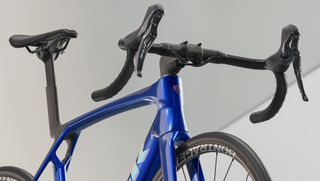
Trek will sell the new Madone in two frame grades, SL and SLR. Both will be offered in four specifications at launch, with SRAM and Shimano options, as well as a frameset-only option.
The top-spec SLR bikes use the latest OCLV 900 series carbon, one-piece handlebar/stem and RSL Aero bottles and cages, and are an electronic groupset only. You can choose your own colors in Trek’s Project One configurator, as well as pre-made colors.
The SL bikes are made of 500 Series OCLV carbon and have a separate handlebar and stem. They are not available for Project One customization and are pre-built only. You don’t get bottles or cages, but the frame is compatible with mechanical groupsets.
US prices for the Gen 8 Trek Madone range from $3,499.99 for the SL 5 to $13,499.99 for the Madone SLR 9 AXS. That’s a $200 price increase over the top-spec Gen 7 bike, although that’s likely due to the new Sram Red AXS groupset.
In the UK that translates to an entry-level price of £3,250, while the top specification costs £12,500. That’s actually a £2,050 discount on the UK list price of the Gen 7 Madone SLR 9 AXS bike – perhaps brands are getting the message about the professional Tour de France bike prices.
The price difference in Euros is €3,499 to €13,999 and in Australia prices range from AU$4,499.99 to AU$19,999.99 for the SLR 9 AXS.
